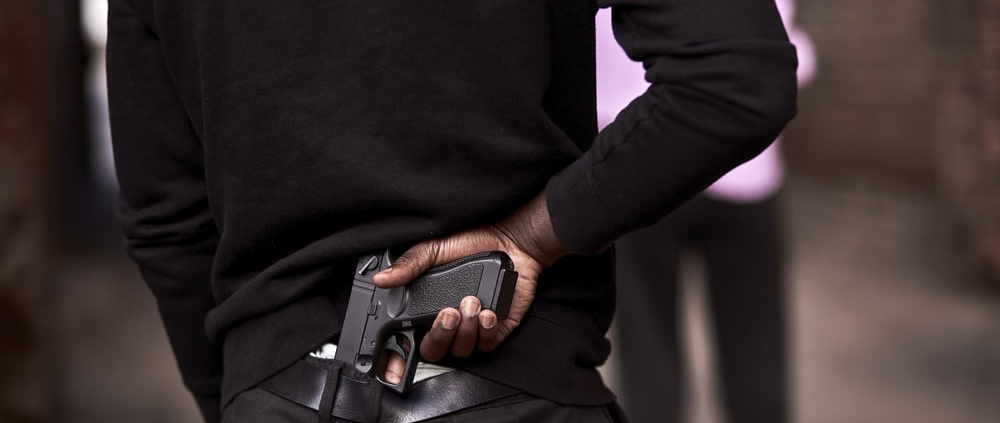Gun Violence in the United States: Causes, Solutions, and Legislative Changes
By Brian Figeroux, Esq.
Gun violence is a pervasive issue in the United States, affecting thousands of lives each year. In cities like New York, it remains a significant public safety concern. This analysis examines the causes of gun violence, explores potential solutions, reviews existing laws and possible legislative changes in New York City, New York State, and at the federal level, and evaluates which presidential candidate, Vice President Kamala Harris or former President Donald Trump, might better impact gun violence reduction efforts. For more information on this analysis, please visit the Law Firm of Figeroux and Associates at www.askthelawyer.us.
Causes of Gun Violence
Socioeconomic Factors
- Poverty and Inequality: High poverty rates and income inequality correlate with higher incidences of gun violence. In areas where economic opportunities are limited, crime, including gun violence, tends to be more prevalent.
- Education and Employment: Lack of access to quality education and stable employment can lead to increased criminal activity. Education and job training programs are essential in providing alternatives to crime.
- Urbanization and Housing: Densely populated urban areas with inadequate housing and social services often experience higher rates of gun violence. Overcrowding and poor living conditions can exacerbate tensions and lead to violent crime.
Social and Cultural Factors
- Family Dynamics and Social Networks: Dysfunctional family environments, exposure to domestic violence, and weak social ties can contribute to an individual’s propensity for violence. Strong community networks can act as protective factors against violence.
- Gang Activity: Gang-related violence is a significant contributor to gun violence in urban areas. Gangs often engage in violent disputes over territory, drug trafficking, and other illegal activities.
- Cultural Attitudes Towards Guns: In some communities, there is a cultural acceptance of guns and violence as means of resolving conflicts. This cultural norm can perpetuate the cycle of violence.
Mental Health Issues
- Access to Mental Health Services: Lack of access to mental health care can lead to untreated mental illnesses, which in some cases, may result in violent behavior. Comprehensive mental health services are crucial in preventing such incidents.
- Substance Abuse: Substance abuse often co-occurs with mental health issues and can exacerbate aggressive and violent tendencies. Integrated treatment for substance abuse and mental health is necessary.
Legal and Policy Factors
- Gun Availability: The availability and accessibility of firearms significantly impact the rates of gun violence. States with looser gun laws generally have higher rates of gun-related deaths.
- Law Enforcement Practices: Ineffective policing strategies and lack of trust between communities and law enforcement can hinder efforts to reduce gun violence. Community-oriented policing and collaboration are vital.
Solutions to Gun Violence
Community-Based Interventions
- Violence Interruption Programs: These programs employ individuals from affected communities to mediate conflicts and prevent retaliatory violence. Examples include Cure Violence and Operation Peacemaker Fellowship.
- Youth Engagement and Education: Providing youth with educational opportunities, mentorship, and recreational activities can steer them away from violence. After-school programs and community centers play a critical role.
- Economic Development: Investing in job creation, vocational training, and economic revitalization in high-crime areas can reduce the appeal of criminal activity.
Public Health Approaches
- Trauma-Informed Care: Implementing trauma-informed practices in schools, healthcare, and social services can help individuals who have experienced violence and prevent further violent behavior.
- Mental Health and Substance Abuse Treatment: Expanding access to mental health and substance abuse services can address underlying issues that contribute to violent behavior.
- Gun Safety Education: Educating the public about gun safety and responsible gun ownership can reduce accidental shootings and misuse of firearms.
Legislative and Policy Changes
- Stricter Gun Control Laws: Implementing universal background checks, banning assault weapons, and restricting high-capacity magazines can limit the availability of deadly firearms.
- Red Flag Laws: These laws allow law enforcement to temporarily remove guns from individuals deemed to be a threat to themselves or others, based on evidence presented to a court.
- Licensing and Training Requirements: Mandating that gun owners obtain a license and complete firearm safety training can ensure that only responsible individuals have access to guns.
Legislative Changes in New York City, New York State, and Federal Level
New York City
- Microstamping Technology: Requiring microstamping on all firearms sold in the city can help law enforcement trace bullets to specific guns, aiding in criminal investigations.
- Increased Funding for Community Programs: Allocating more resources to violence interruption and prevention programs can reduce gun violence at the community level.
- Enhanced Surveillance and Policing: Implementing data-driven policing strategies and increasing the presence of law enforcement in high-crime areas can deter criminal activity.
New York State
- Strengthening Red Flag Laws: Enhancing the existing red flag laws to ensure they are effectively implemented and enforced can prevent individuals who pose a risk from accessing firearms.
- Ghost Gun Regulations: Enforcing stricter regulations on the manufacturing and possession of ghost guns (untraceable firearms) can reduce the number of illegal guns on the streets.
- Firearm Dealer Accountability: Increasing oversight and accountability of firearm dealers can prevent illegal sales and straw purchases (buying a gun for someone who is prohibited from owning one).
Federal Level
- Universal Background Checks: Passing legislation to require background checks for all gun sales, including private and online sales, can prevent prohibited individuals from obtaining firearms.
- Assault Weapons Ban: Reinstituting the federal assault weapons ban, which expired in 2004, can reduce the availability of these highly lethal firearms.
- Funding for Research on Gun Violence: Allocating federal funds for research on gun violence can provide data-driven insights and inform effective policy decisions.
Presidential Candidates’ Impact on Gun Violence
Vice President Kamala Harris
- Policy Proposals: As a former Attorney General of California, Kamala Harris has advocated for comprehensive gun control measures, including universal background checks, a ban on assault weapons, and closing loopholes in gun sales.
- Public Health Approach: Harris supports treating gun violence as a public health issue, emphasizing the need for research, mental health services, and community-based interventions.
- Red Flag Laws: Harris has proposed expanding red flag laws nationwide to prevent individuals who pose a danger from accessing guns.
- Biden-Harris Administration: Under the Biden-Harris administration, several executive actions have been taken to address gun violence, including regulating ghost guns and promoting community violence intervention programs.
Former President Donald Trump
- Policy Stance: Donald Trump has generally opposed strict gun control measures, advocating for the protection of Second Amendment rights. His administration focused on addressing mental health issues and increasing law enforcement presence.
- School Safety: Trump has emphasized the importance of securing schools, including proposals for arming teachers and increasing security measures.
- Red Flag Laws: While Trump has expressed support for red flag laws in principle, his administration did not implement significant changes in this area.
- Gun Rights Advocacy: Trump has strong support from gun rights organizations like the National Rifle Association (NRA), which influences his policy positions on gun control.
Comparative Analysis
- Comprehensive Approach: Kamala Harris’s approach to gun violence is more comprehensive, addressing not only gun control laws but also public health measures and community-based interventions. Her focus on a multi-faceted strategy aligns with evidence-based practices for reducing gun violence.
- Legislative Support: Harris’s proposals are more likely to face resistance in a divided Congress, whereas Trump’s policies, which are less restrictive, may garner more support from conservative lawmakers.
- Long-Term Impact: Harris’s emphasis on treating gun violence as a public health issue and addressing root causes such as poverty and mental health could lead to more sustainable reductions in gun violence. Trump’s focus on law enforcement and Second Amendment rights may result in more immediate but less comprehensive solutions.
Conclusion
Gun violence in the United States is a complex issue with deep-rooted causes that require a multifaceted approach to address effectively. Solutions must include community-based interventions, public health strategies, and legislative changes at the local, state, and federal levels. Vice President Kamala Harris’s comprehensive approach to gun violence, which includes stricter gun control laws, public health initiatives, and community programs, is likely to have a more significant and lasting impact on reducing gun violence. In contrast, former President Donald Trump’s focus on law enforcement and protecting gun rights may offer more immediate but less far-reaching solutions. Ultimately, the effectiveness of any policy depends on its implementation and the political will to address this critical issue comprehensively.








Leave a Reply
Want to join the discussion?Feel free to contribute!